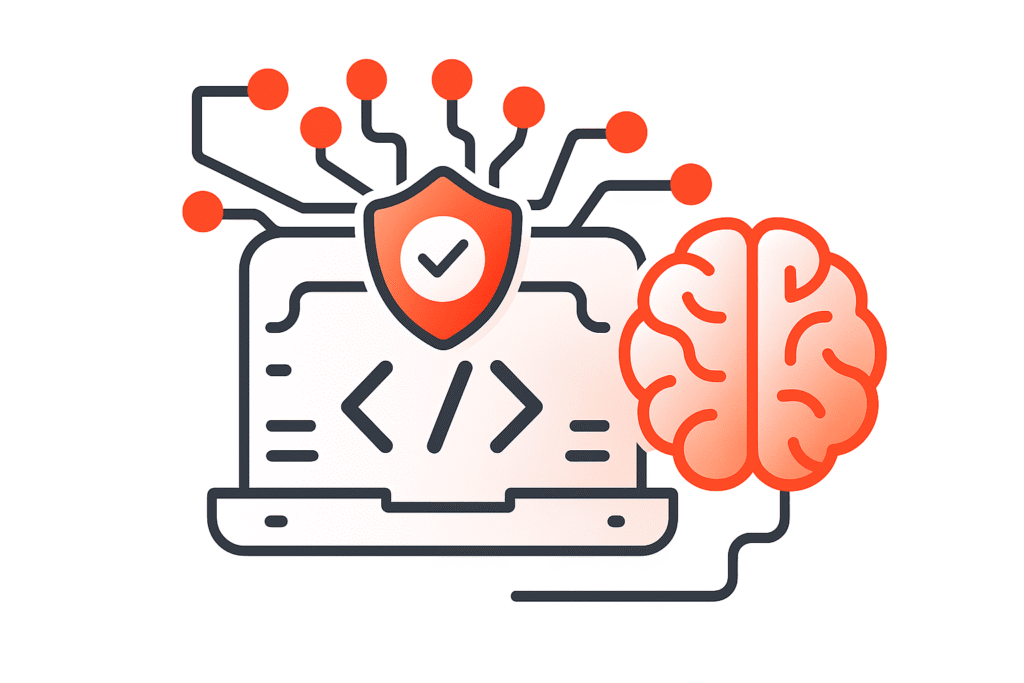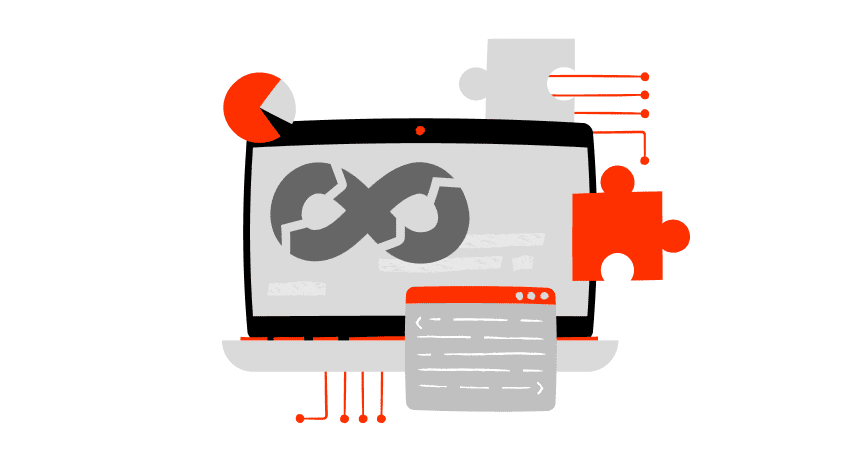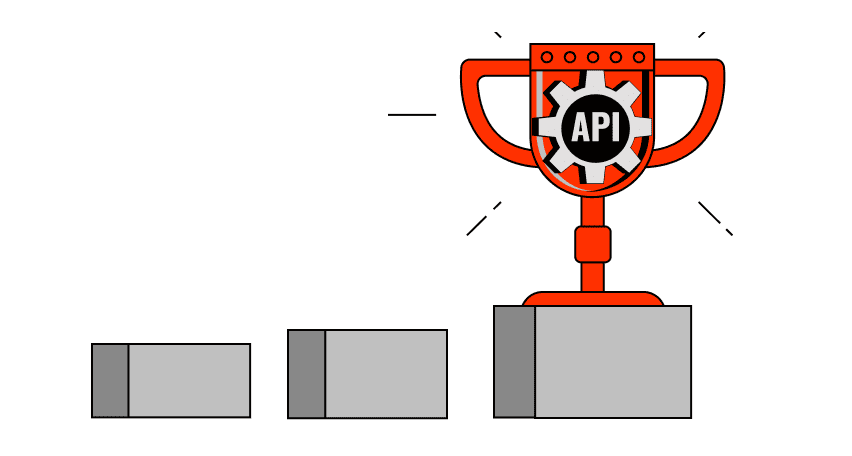Continuous performance testing is a proactive approach to validating the speed, stability, and scalability of software throughout the development lifecycle. It ensures that applications remain responsive under different loads, providing a smoother user experience and reducing the risk of performance-related issues in production.
In this guide, we’ll look at what continuous performance testing actually involves, why it’s essential for modern DevOps and CI/CD workflows, and how it stacks up against traditional performance testing.
What Is Continuous Performance Testing?
Continuous performance testing is a method of evaluating software performance as an ongoing part of the development and deployment lifecycle. It involves running tests regularly, not just before a major release, to identify performance bottlenecks, verify stability, and ensure scalability under real-world conditions. Unlike traditional performance testing, which typically happens late in the development process, continuous performance testing is integrated into the CI/CD pipeline, providing faster feedback and reducing the risk of performance-related incidents in production.
This approach also helps teams respond quickly to changing requirements — a critical practice for organizations that prioritize agility and customer satisfaction.
Key Benefits of Continuous Performance Testing
Continuous performance testing benefits include several advantages over traditional, one-time tests. Here are some of the most important benefits:
Early Bottleneck Detection
Identifying performance issues early in the development lifecycle reduces the risk of critical failures in production. It’s easier and less costly to fix problems when they’re caught before release, and continuous performance testing ensures you’re not blindsided by unexpected slowdowns.
Faster Feedback Loops
Continuous performance testing integrates seamlessly with CI/CD pipelines, providing rapid feedback to developers. This speeds up the development process and reduces the time spent troubleshooting after code merges.
Cost Control
Detecting and resolving performance issues early can significantly reduce the costs associated with post-release fixes. It also helps avoid expensive downtime and lost revenue due to poor application performance.
Improved User Satisfaction
Fast, reliable applications lead to happier users. Continuous performance testing helps ensure your software can handle peak loads without slowing down, resulting in a better overall user experience.
Higher Release Confidence
When you know your application can handle real-world traffic without breaking, you can release updates with greater confidence. This is crucial for maintaining customer trust and avoiding negative publicity.
How Continuous Performance Testing Is Conducted
Conducting continuous performance testing involves several interconnected steps, each aimed at ensuring your application can handle real-world loads while maintaining stability and speed. Here’s a deep dive into how it’s done:
Step 1: Test Environment Setup
A realistic test environment is crucial for meaningful performance testing. Use containerized setups like Docker or Kubernetes to replicate your production environment as closely as possible. This includes matching server configurations, network conditions, and database settings.
Example Docker Compose File:
version: '3'
services:
app:
image: myapp:latest
ports:
- "8080:8080"
environment:
- NODE_ENV=production
db:
image: postgres:14
environment:
POSTGRES_USER: user
POSTGRES_PASSWORD: password
POSTGRES_DB=prod_db
Step 2: Test Script Creation (JMeter)
Create test scripts that reflect real-world usage. Use JMeter to simulate user actions like browsing, searching, and checking out, with realistic data and dynamic parameters.
Example JMeter Test Plan (XML format):
<TestPlan guiclass="TestPlanGui" testclass="TestPlan" testname="MyApp Performance Test" enabled="true">
<ThreadGroup guiclass="ThreadGroupGui" testclass="ThreadGroup" testname="Basic Load Test" enabled="true">
<stringProp name="ThreadGroup.num_threads">100</stringProp>
<stringProp name="ThreadGroup.ramp_time">30</stringProp>
<stringProp name="ThreadGroup.duration">300</stringProp>
</ThreadGroup>
<hashTree>
<HTTPSamplerProxy guiclass="HttpTestSampleGui" testclass="HTTPSamplerProxy" testname="Homepage" enabled="true">
<stringProp name="HTTPSampler.domain">localhost</stringProp>
<stringProp name="HTTPSampler.port">8080</stringProp>
<stringProp name="HTTPSampler.protocol">http</stringProp>
<stringProp name="HTTPSampler.path">/</stringProp>
<stringProp name="HTTPSampler.method">GET</stringProp>
</HTTPSamplerProxy>
<HTTPSamplerProxy guiclass="HttpTestSampleGui" testclass="HTTPSamplerProxy" testname="Checkout" enabled="true">
<stringProp name="HTTPSampler.domain">localhost</stringProp>
<stringProp name="HTTPSampler.port">8080</stringProp>
<stringProp name="HTTPSampler.protocol">http</stringProp>
<stringProp name="HTTPSampler.path">/checkout</stringProp>
<stringProp name="HTTPSampler.method">POST</stringProp>
<stringProp name="HTTPSampler.postBodyRaw">true</stringProp>
<elementProp name="HTTPsampler.Arguments" elementType="Arguments">
<collectionProp name="Arguments.arguments">
<elementProp name="" elementType="HTTPArgument">
<stringProp name="Argument.value">{"product_id": 123, "quantity": 1}</stringProp>
<stringProp name="Argument.metadata">=</stringProp>
</elementProp>
</collectionProp>
</elementProp>
</HTTPSamplerProxy>
</hashTree>
</TestPlan>Step 3: CI/CD Integration
Integrate your JMeter test scripts into your CI/CD pipeline for automated performance checks on every code push.
Example GitHub Actions Workflow:
name: Continuous Performance Testing
on:
push:
branches:
- main
jobs:
performance-test:
runs-on: ubuntu-latest
steps:
- name: Checkout code
uses: actions/checkout@v3
- name: Set up Java
uses: actions/setup-java@v3
with:
distribution: 'temurin'
java-version: '17'
- name: Run JMeter Tests
run: |
wget https://downloads.apache.org/jmeter/binaries/apache-jmeter-5.5.zip
unzip apache-jmeter-5.5.zip
./apache-jmeter-5.5/bin/jmeter -n -t MyAppTestPlan.jmx -l results.jtl -e -o ./reports/
Step 4: Monitoring and Observability
Monitor your tests in real-time using tools like Grafana, Prometheus, or DataDog to capture critical metrics like response time, error rates, and resource utilization.
Prometheus Configuration:
global:
scrape_interval: 15s
scrape_configs:
- job_name: "myapp"
static_configs:
- targets: ["app:8080"]Step 5: Automated Reporting and Analysis
Generate detailed reports after each test run to capture trends and identify potential bottlenecks. Use tools like Allure or JUnit for structured reports. For easier interpretation across any format, check out Prompts for Performance Testing.
Example Allure Report Generation:
jmeter -n -t MyAppTestPlan.jmx -l results.jtl -e -o ./reports/Step 6: Threshold Alerts and Incident Response
Set performance thresholds and automatic alerts to catch critical issues before they reach production.
Example Prometheus Alert Rule:
groups:
- name: Performance Alerts
rules:
- alert: HighResponseTime
expr: rate(http_request_duration_seconds_bucket{le="0.5"}[5m]) < 0.95
for: 2m
labels:
severity: critical
annotations:
summary: "High response time detected"
description: "More than 5% of requests are taking longer than 500ms"Step 7: Cross-Environment Consistency
Run your tests across multiple environments (e.g., dev, staging, production-like) to catch environment-specific issues and ensure consistent performance.
Environment Variable Setup:
env:
- PROD_HOST=http://prod.example.com
- STAGING_HOST=http://staging.example.comChallenges of Continuous Performance Testing
While continuous performance testing offers significant benefits, it also presents unique challenges that teams need to address to get the most out of this approach. Here are some of the most common hurdles:
Best Practices for Continuous Performance Testing
To get the most out of continuous performance testing, it’s essential to follow best practices that ensure reliable and reproducible results. Here are some key practices to consider:
Synthetic Load Generation
Instead of waiting for real-world traffic to expose performance issues, use synthetic load generation to simulate different user behaviors and traffic patterns. This helps you catch potential bottlenecks before they impact actual users.
Resiliency Testing
Include resiliency testing in your performance strategy to assess how your application responds to unexpected failures, network disruptions, or sudden traffic spikes. This approach helps build more robust systems that can handle real-world challenges.
Script Versioning
Keep your test scripts versioned alongside your application code. This makes it easier to track changes, roll back when needed, and ensure your performance tests align with the current state of the application.
Testing Pyramid
Adopt a testing pyramid approach, with a focus on small, fast unit tests at the base, integration tests in the middle, and fewer, more complex end-to-end tests at the top. This structure helps reduce test execution time without sacrificing coverage.
Isolated and Integrated Testing
Combine isolated component testing with integrated system tests to capture both small-scale and large-scale performance issues. This approach ensures you’re not missing critical bottlenecks that only appear under real-world conditions.
Reproducible Environments
Use containerized environments, like Docker or Kubernetes, to ensure consistent test results. This reduces the risk of discrepancies between development, testing, and production environments.
Cross-Environment Analysis
Run performance tests across different environments (e.g., dev, staging, production-like) to identify environment-specific issues that might not be obvious in a single setup.
Observability and Visual Reporting
Invest in tools that provide real-time observability and clear visual reports. This makes it easier to identify trends, diagnose problems, and communicate findings to non-technical stakeholders.
With PFLB, this process is even simpler because it includes a built-in AI-powered reporting feature. For a step-by-step walkthrough, see How to Generate AI-Powered Load Test Reports, which shows how the platform automatically turns raw test data into comprehensive reports.
How PFLB Can Help with Continuous Performance Testing
PFLB has been at the forefront of performance engineering for over a decade, providing a wide range of performance testing services and helping companies scale their systems, optimize application performance, as well as avoiding costly outages. Here’s what sets us apart:
Final Thoughts
Continuous performance testing means treating performance as a critical, continuous part of the software lifecycle. By integrating automated tests, realistic load simulations, and real-time monitoring, you can catch performance issues early, reduce risk, and deliver a more reliable user experience.
With the right continuous testing tools, clear test strategies, and a commitment to ongoing improvement, it’s possible to catch bottlenecks before they impact users, maintain stability under peak loads, and ultimately build systems that scale with confidence.
Related insights in blog articles
5 Load Testing Tasks Engineers Should Automate with AI Right Now

Load testing is essential, but much of the process is repetitive. Engineers spend hours correlating scripts, preparing datasets, scanning endless graphs, and turning raw metrics into slide decks. None of this defines real expertise — yet it takes time away from analyzing bottlenecks and making decisions. Modern platforms are embedding AI where it makes sense: […]
7 Best Continuous Testing Tools to Start Using Today

Identifying and fixing software flaws early in SDLC is much more effective than doing so after release. With the right continuous testing solutions, IT professionals can easily detect and resolve software issues before they escalate into greater problems and businesses can ensure faster time to market and eliminate potential re-engineering costs. In this guide, we’ll […]
Best API Load Testing Tools for 2025

APIs are the backbone of modern applications, and their stability under load directly impacts user experience. Without proper testing, high traffic can cause slowdowns, errors, or outages. API load testing tools help simulate real-world usage by sending concurrent requests, tracking response times, and exposing bottlenecks. In this guide, we’ll review the top API load testing […]
6 AI Tools Performance Testers Already Use Today

Performance testing tools already rely on AI methods. Monitoring platforms use anomaly detection, cloud providers forecast demand for autoscaling, and log systems group patterns with machine learning. These features are often treated as standard, but they are all examples of AI applied in practice. This article looks at six areas where testers already work with […]
Be the first one to know
We’ll send you a monthly e-mail with all the useful insights that we will have found and analyzed
People love to read
Explore the most popular articles we’ve written so far
- Top 10 Load Testing Tools for 2025: The Deep Dive Sep 9, 2025
- Cloud-based Testing: Key Benefits, Features & Types Dec 5, 2024
- Benefits of Performance Testing for Businesses Sep 4, 2024
- Android vs iOS App Performance Testing: What’s the Difference? Dec 9, 2022
- How to Save Money on Performance Testing? Dec 5, 2022




